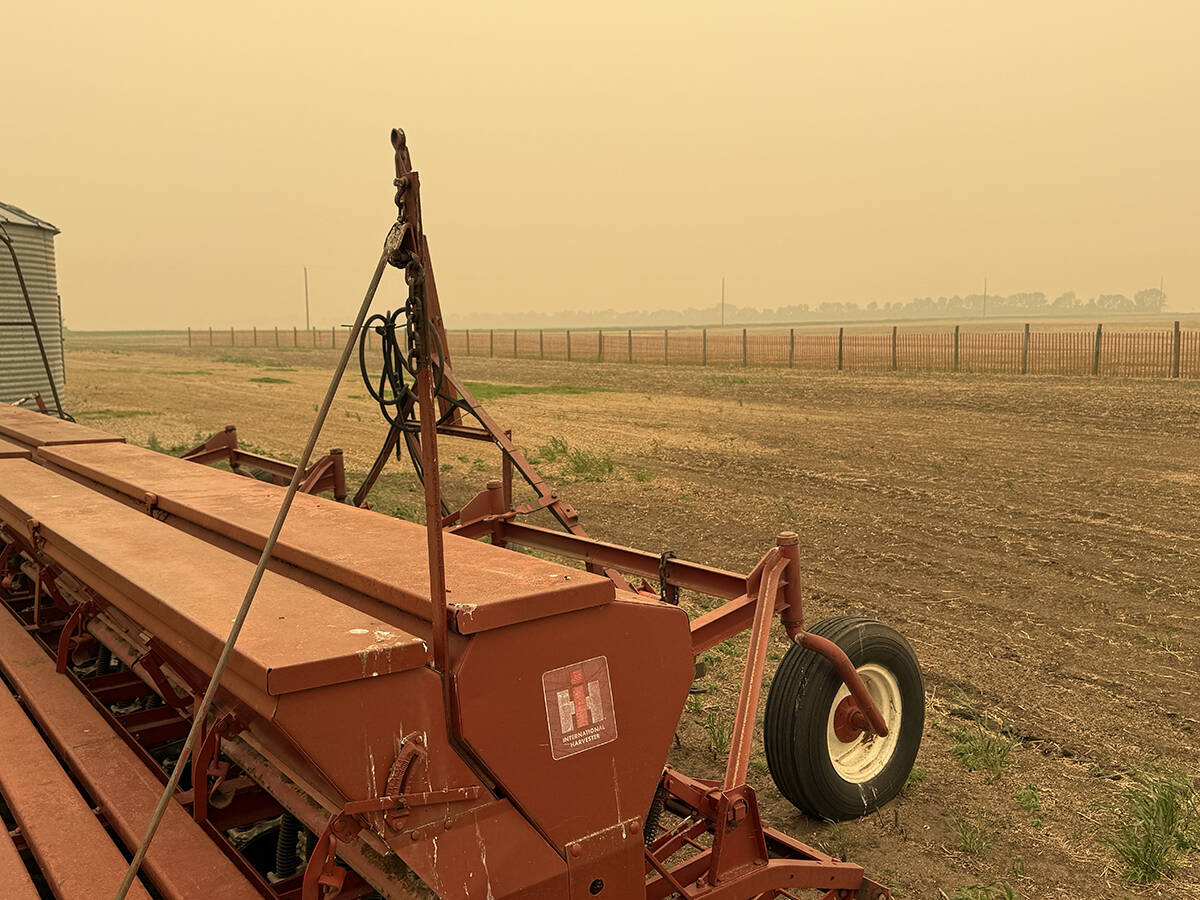WABAMUN, Alta. – Looking across the rolling hills, sloughs and hay land west of Edmonton, it’s hard to imagine the land was once a huge open pit coal mine.
Bales of alfalfa dot the fields, geese swim in the slough at the bottom of a hill and cattle graze in the distance.
“When I bring people out here they’re amazed at the reclamation,” said Gavin Miller, supervisor of TransAlta’s Reclamation Centre, during a tour of the coal mine’s project in Duffield, Alta.
The area surrounding the Whitewood mine, an open pit strip mine, is a combination of trees, rolling hills, sloughs and lakes. When the company is finished reclaiming the mine it wants the site to be indistinguishable from the surrounding land.
Read Also

Wildfires have unexpected upside this year
One farmer feels smoke from nearby wildfires shrouded the July skies and protected his crop from the sun’s burning rays, resulting in more seeds per pod and more pods per plant.
“We try to replicate the pre-mine landscape,” said Miller.
“You want diversity. In this area you don’t see 300 acres of flat land.”
Elk, moose and deer have moved back to the area set aside for wildlife habitat. It’s not unusual to harvest 80 bushels of oats or 50 bu. of wheat per acre off the reclaimed farm land, he said.
This summer Kim Bamber of Wabamun got more than four tonnes per acre of hay off the land under the mine’s reclamation project.
It’s a vast difference from the area only a few hundred metres away where workers dig coal from the ground 60 metres below the surface.
As trucks haul coal from the crater in the earth, the land is refilled behind them, the top soil replaced and the reclamation work begins.
In the first three to four years of reclamation, land is seeded to cereal crops. If there’s erosion concerns, the problem areas are fixed at this time with a series of mulches to cover the hay land or spread extra straw directly on the field. The fields receive whatever the fertilizer recommendations call for, said Miller.
“We sock the fertilizer to it fairly good,” said Miller, whose goal is to get the land back into original condition within four years.
After the cereal crops, the land is seeded to a mixture of alfalfa and brome for hay. By year seven Miller applies for a reclamation certificate from the government that the land is reclaimed back to its original state. The land is then leased to farmers. Eventually the company hopes to resell the land.
There are 8,000 acres of land at the Whitewood mine site. About 4,000 acres have been mined or are ready to be mined. Of those, about 3,000 acres have been reclaimed. Of that, 2,200 acres have been given a reclamation certificate by the government. About 500 acres of that land, mostly rebuilt wetland areas, have been given to the government and the local fish and game organization to use as wildlife habitat and fishing.
Rebuilding lakes and sloughs helps to recharge the ground water. A year before the land is mined, underground water is removed to stabilize the coal mining area.
The rules for reclaiming land after mining were not always as demanding.
Even in the late 1980s there was no requirement for companies to replace topsoil.
On one such section of land, TransAlta joined Bamber and the Prairie Farm Rehabilitation Administration to develop a rotational grazing project.
“There are a lot of benefits to rotational grazing. Why not do it on reclaimed land,” said Bamber.
Half the 100-acre area was left for the cattle to continuous graze. The other 50 acres were divided into eight paddocks and the cattle rotated through the pastures.
“The objective is evaluate the rotational grazing and conventional grazing and monitor the quality of grass,” said Arnold Matson of PFRA.
Grass production is measured by weighing the cows and calves and by measuring grass growth in special cages in the pasture.
Under the three-year project, the group anticipates a higher level of production from the rotational grazed land. Bamber wants to boost the cattle numbers from 15 pairs to at least 25 cow-calf pairs.
Miller said TransAlta participated in the grazing project to help prove the coal land can be reclaimed.
“We like projects like these. That’s how the reclamation gets proven. There’s a lot of skepticism out there.”














